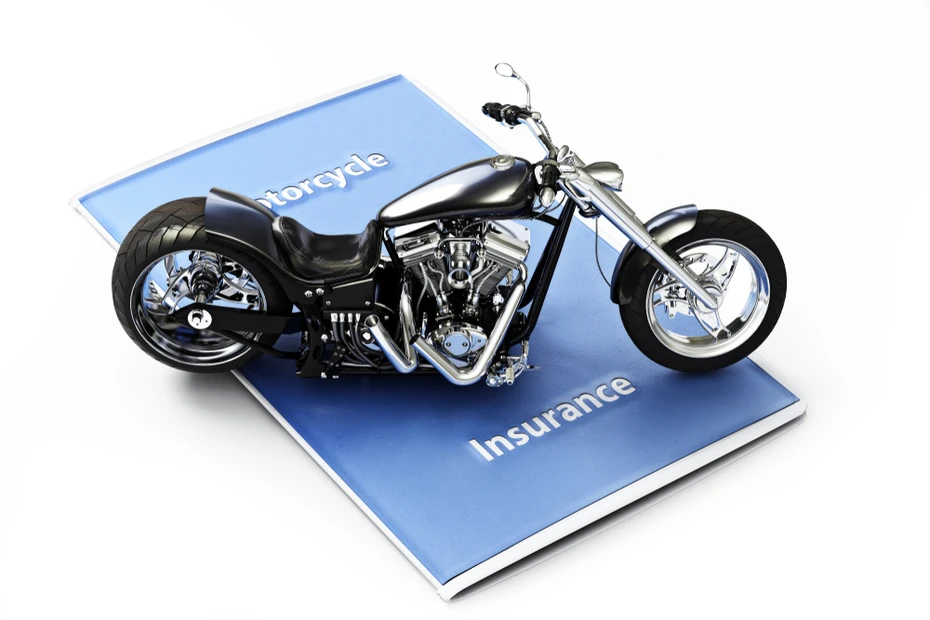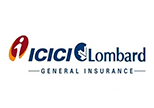Bike Insurance
Calculate Your Bike Insurance Price Online
Select your bike brand

- Honda
- Hero
- TVS
- Hero Honda
- Bajaj
Which city is your bike registered in?
- New Delhi
- Bangalore
- Mumbai
- Chennai

When did you buy your bike?

What Is Bike Insurance?
If you own a bike, you know its value: the thrill of adventure, fun rides with the family, and the convenience of travelling in the local area. Indian households very quickly become attached to their bikes, and to ensure these sentiments are protected, getting bike insurance is very important. Bike Insurance protects your vehicle from the potential risk of damage and ensures that your bike continues to provide memories even after a setback.

Top Bike Insurance Plans
No Inspection Needed
Immediate Policy Issurance
No Paper work
No Inspection Needed
Immediate Policy Issurance
No Paper work
Why Do You Need Bike Insurance?
- Legal Requirement - In India, having at least a third-party liability cover is mandatory to legally ride on the roads. Failure to comply can lead to fines or even license suspension.
- Financial Security - Bike insurance protects you from the financial burden of repairing damages to your vehicle or another party’s, especially in accidents.
- Protection Against Theft - If your bike is stolen, comprehensive coverage can compensate you for the loss, mitigating out-of-pocket expenses.
- Personal Accident Cover - Most bike insurance policies include personal accident coverage, providing financial support for medical treatment in case of injuries sustained due to an accident.
- Third-Party Liability - If your bike is involved in an accident causing damage or injury to someone else, third-party liability coverage pays for their expenses or legal claims, reducing your financial risk.
Types of Two Wheeler Insurance
There are 3 types of bike insurance policy in India and InsuranceDekho offers all of them.
- Preferred
Comprehensive Bike Insurance
The Comprehensive bike insurance policy is a combination of both Standalone and Third-party car insurance. It is the most recommended policy as it protects you from the financial risks of causing damage or injury to a third person or property and covers the damages sustained by your bike as well.
Third Party Bike Insurance
This insurance policy is mandatory for all motor vehicles. The Indian law makes it compulsory for people to purchase third-party bike insurance policies for their bikes. This policy covers the legal obligation to compensate for damages or injuries caused to a third person or property due to an accident by your bike.
Own-Damage Bike Insurance
The standalone own-damage policy covers the damages incurred by your vehicle. This policy safeguards your two-wheeler financially as it covers the cost of repair. If your bike gets damaged due to an accident, vandalism, or natural calamities such as earthquakes, floods, and riots, you can file a claim and the insurer will pay for the repair of your bike.
Key Features of a Bike Insurance Policy
Below listed are the key features and benefits of buying a bike insurance policy:
Legal Compliance: The Indian Motor Act 1988 makes it mandatory to purchase third-party insurance for every motor vehicle. Hence third-party bike insurance is necessary to purchase as it fulfils a legal obligation.
Third-Party Liability Coverage: The Third-party liability policy covers the compensation you are obliged to pay for damaging any third person's property or causing injury to a third person by your bike. It also covers the compensation to be paid if the accident caused a disability or death of the victim.
Own Damage Protection: In a Comprehensive Plan or a standalone own damage insurance policy, the risks of your bike getting damaged are covered in the insurance plan. It covers the damages caused by accidents, natural calamities, theft, fire, vandalism, etc.
Covered vs Not Covered Under Bike Insurance Policies
There are inclusions and exclusions in every policy. Bike insurance policy clearly outlines in the policy documents what is covered and what is not covered in the policy. You can refer to the table below to find out the basic coverages and not covered of a bike insurance policy.
Cover | Stand Alone Own Damage | Third-Party | Comprehensive |
Damage/Losses happened to own bike due to an accident | YES | NO | YES |
Damage/Losses happened to own bike due to fire | YES | NO | YES |
Damage/Losses happened to own bike due to natural calamity | YES | NO | YES |
Damages to Third-Party vehicle | NO | YES | YES |
Damage to Third-Party Property | NO | YES | YES |
Personal Accident Cover | NO | YES | YES |
Injuries or Death of Third Person due to Accident | NO | YES | YES |
Theft of Bike | YES | NO | YES |
Customisable IDV | YES | NO | YES |
Available Add-ons | YES | NO | YES |
Key Factors to Consider While Choosing a Bike Insurance Plan
While choosing an insurance policy for your bike, you have to find the policy that meets your expectations and fulfils your requirements. Here are the key factors to consider before selecting a bike insurance policy.
1. Type of Coverage: The policy's coverage is its primary component. Although some insurers require personal accident coverage, third-party liability typically only covers damages that your vehicle causes to another person or piece of property. The benefits of the own damage and third party policies are covered by the comprehensive coverage. Motorbike damage from theft, accidents, natural disasters like floods and earthquakes, vandalism, and riots is covered by own damage insurance.
2. Insured Declared Value (IDV): The IDV is the current market value of your bike. Your IDV affects your premium, higher IDV has a higher premium. It also is the price the insurer pays in case your bike is stolen or damaged beyond repair.
3. Add-on Covers: Among the list of more than 10 add-ons in the market, some are fairly very popular given the benefits they add to the insurance policy. The most brought add-ons are Zero Depreciation Cover, Roadside Assistance, and Engine Protection. Check if the policy is offering these add-ons to add to your policy.
4. Claim Settlement Ratio: Claim Settlement Ratio or CSR is a crucial metric to analyse the efficiency of the insurer in terms of settling claims. It indicates if the insurer settles the claim smoothly. While searching for a policy, look for insurers that have a CSR between 95-98%
5. Network of Cashless Garages: Cashless garages are a very important facility for motor insurance. These are garages that provide services and don't charge any money from you. These garages are directly tied with insurers and get paid directly from them. A large network of garages means that you can easily find one near to wherever you are.
6. Premium Cost: After adding add-on covers, your premium amount should be a balance between coverage and affordability. Check plans from different insurers and compare quotes on InsuranceDekho and find the insurer that provides the required coverage at an affordable price.
Eligibility Criteria for Purchasing a Bike Insurance Policy
To purchase bike insurance, you must fulfil the following conditions:
- The bike should be registered under your name.
- You must have a Government authorised identification card.
- You should have a proof of address.
- You must be above the age of 18 years and have a valid driving license.
- The bike must be registered under the RTO (Regional Transport Office).
Benefits of Buying Bike Insurance
Here are some key benefits of buying bike insurance:
1. Financial protection: The insurer covers the cost of repair if you crash or damage your bike.
2. Covers theft: if your bike gets stolen, the insurer will give you the market value of the bike.
3. Personal Accident cover: With this cover the insurer covers the medical expenses in case you get injured while riding.
4. Legal support: The insurer shows up at the MACT on your behalf with legal expertise in case a third-party claim is filed.
5. Peace of mind: You don't have to worry about the rising expenses of bike repair.
6. Legal Obligation: Third-party coverage is mandatory for every vehicle, not having the policy can lead to fines and even imprisonment.
7. Roadside Assistance: If your bike breaks down in the middle of a journey, you can call immediate help under this cover. A vehicle with equipment will arrive at your location and get you back on the wheels.
Two Wheeler Insurance Add-ons
Add-ons bring extra protection to your policy. Each add-on comes with a price and hence increases the premium. Here is a list of the most popular add-ons that are favoured to go with Bike insurance plans.
With this add-on, the policyholder does not have to pay for the depreciated value of parts while filing a claim as the insurer covers that cost as well. This add-on is most suitable for new bike owners
The Return to Invoice is a very exciting add-on as in case of theft or damage beyond repair, the insurer provides the invoice value of the bike including road tax and RTO registration.
This add-on allows you to file a claim that does not exhaust your NCB. This means your NCB bonus will continue on renewal unaffected by the claim you made during the policy.
The Engine Protection add-on covers the risk of water damage in the engine. Engine repair is usually very expensive and hence this add-on is a must-have for people living near flood-prone areas.
This is a very essential service that must be in your policy. Roadside assistance cover provides a 24/7 helpline that sends immediate help to your location in case of an emergency. This emergency can be an accident, a flat tyre, an empty fuel tank, etc.
When your bike is getting repaired at the garage, the mechanic uses screws, nuts, oil, etc for which the policyholder is charged. With this cover, you will not have to worry about these expenses as they will be covered under this cover.
This cover covers the cost of replacing the keys and lock system if the keys are stolen or lost. This cover is suitable for bikes with advanced lock systems as it can be expensive to replace.
This add-on should be a priority for people who do not ride alone. This add-on covers the medical expenses in case of injuries and provides compensation in case of disabilities or death of a pillion rider.
Explore Two Wheeler Insurance
Partner Bike Insurance Companies
Why Choose InsuranceDekho for Bike Insurance Online?
- Best Bike Insurance in Just 60 Seconds*
We issue your bike insurance in just 60 Seconds with our simple, swift and paperless process.
- Over 50 Lakh Happy Customers
InsuranceDekho is a preferred choice of every insurance seeker. With our quick process, top-rated insurance plans, and committed customer care staff, we have managed to get the love and support of over 50 Lakh satisfied customers till now.
- 7 Days Dedicated Customer Support
We have a dedicated customer support team which is available at your service everyday. You can reach out to our support staff for any insurance related assistance be it related to policy purchase or claim settlement, we are always there to assist you.
Documents Required for Purchasing a Bike Insurance Policy in India
- Vehicle Registration Certificate (RC)
- Valid Driving Licence
- Identity Proof (Aadhaar Card/PAN Card/Voter ID/Passport)
- Address Proof
- Previous Insurance Policy
- Invoice of the Bike (For new bikes or to determine Insured Declared Value (IDV)
Note that it is best to check with the insurer as some insurers might need some additional documents.
Understanding The Claim Settlement Process
Claim settlement is the process where the insurer pays for the covers they have provided in the policy. Whenever your bike gets damaged or there is a case of third party damage, you can file a claim if the cause of damage is included in the policy.
There are two types of claim settlement processes:
- Cashless Claim Settlement: In the cashless claim settlement process, you don't have to make any upfront payment to the garage. This facility is available only at the cashless garage network as they have direct ties with the insurer. The insurer companies pay the garages for your repair directly after the work is completed.
- Reimbursement Claim Settlement: In this process, you have to pay for the bike repair at the garage and later send the invoice to the insurer. The insurer will then settle your claim by sending you the money into your bank account.
How to File a Bike Insurance Claim?
To file a claim, the most important thing is to initiate the claim on time. Ideally, you should inform the insurer about the damage as soon as you observe the damage. You can also seek assistance from InsuranceDekho’s claim assistance team by calling on toll-free number 7551196989. You can also send us an email at support@insurancedekho.com and we will schedule a home visit from our relationship manager.
Documents Required for Bike Insurance Claim Settlement
The most common documents required to file a claim for your bike insurance are mentioned below. However, it is best to check with the insurer regarding any additional documents required:
- Original claim form
- Copy of registration certificate (RC)
- Copy of the driving licence of the person driving the vehicle at the time of the accident.
- Copy of policy documents.
- Government-authorised Identification Document.
- FIR or police report (If applicable).
- Repair invoice ( in case of cashless claim settlement)
Common Reasons for Claim Rejection
There are many cases where the claim get rejected, here are the most common cases where claims get rejected:
- Missing or not authorised documents from the checklist.
- Delay in intimation of claim.
- Willful misconduct or negligence is the main reason for claims getting rejected.
- Intentional harm caused to a third-party
- Intentional damage caused to own vehicle.
Tips for Avoiding Claim Settlement Issues
Here are some tips to keep in mind in order to prevent obstacles in the claim settlement process:
- Document Everything - After an accident, take photos and videos of the damage and gather required documents such as FIR, hospital bills, repair estimates, to start your claim.
- Inform Your Insurer Immediately - Notify your insurance company immediately about the incident and begin the claims process.
- Provide Accurate Information - Ensure all details in your claim form are correct. Inconsistent or misleading information can lead to delays or denial of the claim.
- Follow Policy Terms & Conditions - Adhere to the guidelines in your policy document regarding repairs, authorized service centers, and timelines for claim submission.
- Maintain Documents - Retain copies of emails, letters, and receipts related to your claim. This can help if you need to clarify any discrepancies later on.
How to Buy/Renew Bike Insurance Online?
With InsuranceDekho, you can buy or renew motorcycle / scooter insurance very easily and quickly. You can follow the below-mentioned steps to buy/renew the best two wheeler insurance online.
- Enter Your Bike Details
Fill up your two wheeler details like make, model, fuel type, etc., to find the top bike insurance policy quotes offered by different insurance companies based on your specifications.
- Compare Bike Insurance Policy Quotes
From all the available plan options, pick the policy which meets your requirements and budgets in the best possible manner.
- Pay for the Policy Online
Pay the premium price of the chosen two wheeler insurance policy online. After paying the premium, you will instantly receive your motorbike insurance document in your email inbox.
Top Bike Insurance Policies in India 2025
Here is a list of the top bike insurance providers in India with all the key metrics you need to know to compare and find the best plan for yourself.
| Companies | Network Garages | Claim Settlement Ratio | |
|---|---|---|---|
| HDFC ERGO General Insurance | 7,000+ | 100% | |
| NAVI General Insurance Ltd. | 4,500+ | 99.99% | |
| Reliance General Insurance | 6,200+ | 98.65% | |
| Bajaj General Insurance | 5,500+ | 98.54% | |
| Kotak Mahindra General Insurance | 3,000+ | 98% | |
| IFFCO Tokio General Insurance | 4,300+ | 95.30% | |
| ICICI Lombard General Insurance | 8,000+ | 93.04% | |
| Universal Sompo General Insurance | 3,500+ | 90.78% | |
| New India General Insurance | 3,000+ | 89.60% | |
| SBI General Insurance | 16,000+ | 89.51% | |
| National General Insurance | 3,100+ | 85.71% | |
| United India General Insurance | 3,100+ | 82.93% |
Disclaimer: The list of insurers mentioned above is organized in descending order based on their respective Claim Settlement Ratios. InsuranceDekho neither endorses, rates nor recommends any specific insurer or insurance product offered by any insurer. The insurance plans included herein represent products offered by our partner insurers. For a comprehensive list of insurers operating in India, please refer to the official website of the Insurance Regulatory and Development Authority of India (IRDAI) at www.irdai.gov.in.
Bike Insurance Renewal Process
Renewal is the process of extending the policy for another term after it expires. Bike Insurance policies usually expire in one year and hence renewal is required to continue the benefits of the insurance policy.
Renewing a policy is necessary to continue bearing the benefits of an insurance policy. To avoid any gaps in the policy and maintain the coverages of a bike insurance policy. If there are gaps in the policy, which means if you fail to renew it within the grace period, then you can face consequences and challenges in buying another policy that includes loss of NCB and inspection of the vehicle.
Online process
You can renew your bike insurance policy by following the 5 simple steps:
Step 1: Visit the official website of InsuranceDekho.
Step 2: Please find the ‘Support’ tab on the top bar of the page.
Step 3: A dropdown menu will appear, from the list click on ‘Renew Policy’.
Step 4: Login by using your contact number and OTP.
Step 5: Now you will see your dashboard on the screen with a list of your policies, select the bike insurance you want to renew and click on ‘Renew’.
Step 6: Lastly, complete the process by completing the payment through any digital payment channels like UPI, credit/debit card, etc.
Offline Process
If you want to buy a bike insurance policy with an offline approach, InsuranceDekho provides an alternative method where a relationship manager is assigned to visit you and get you through the complete process. You can have a meeting with the executive and directly discuss your priorities and requirements from the policy.
To book an appointment with the relationship manager, visit the InsuranceDekho website and click on ‘Call Back’ option. You will be contacted by our team and a relationship manager will be assigned to who will reach out to you at your given time.
Two Wheeler Insurance By Popular Manufacturers
Find Right Bike Insurance Quotes by Body Type
How to Switch Bike Insurance Providers?
- Review Your Current Policy - Check your existing policy, renewal date, and any add-ons or endorsements before you start comparing other insurers.
- Compare Plans & Premiums - Use online comparison tools or seek quotes from different insurance companies. Look at coverage benefits, claim settlement ratios, and premium costs.
- Transfer Your No Claim Bonus - If you have an NCB, transfer it to your new policy. This can significantly reduce your premium cost.
- Notify Your Existing Insurer - Inform your current insurer if you decide to switch. Confirm any cancellation charges or refund amount, if applicable.
- Coordinate the Switch Date - Make sure there’s no gap in coverage. Ideally, your new policy should begin the same day or before your old policy ends.
- Complete Documentation - Provide the new insurer with necessary documents, like vehicle registration, previous policy details, and identity proof, to finalize the switch.
- Check Policy Terms & Conditions - Read your new policy thoroughly to understand its features, claim procedures, and exclusions before you start it.
Common Bike Insurance Terms and Definitions
The world of Insurance does have some jargon and it is crucial to familiarise yourself with them to make the right decision while purchasing bike insurance. Here are some common terms you would hear around insurance:
1. Deductible: This is a pre-agreed amount between the insurer and the policyholder. Deductibles are an amount that the policyholder agrees to pay before insurance covers the claim. For example, if the deductible amount is Rs. 5,000, and the repair cost is Rs. 20,000, then you will have to pay Rs. 5,000 and the remaining Rs. 15,000 will be covered by the insurer.
2. Premium: It is the amount you pay to the insurer for providing you with the insurance policy. Premium can be paid monthly, quarterly, or annually, depending on your agreement with the insurer.
3. Liability Coverage: This is the cover included in third-party bike insurance where the policy covers the damages or injuries caused to a third-party person or property due to a collision with your bike.
4. Collision Coverage: Under this cover, the damages to your bike resulting from a collision with another vehicle or object.
5. Comprehensive Coverage: This coverage combines the benefits of third-party liability and a standalone own-damage policy.
6. Personal Injury Protection (PIP): This cover bears the medical expenses in case of an accident where the policyholder gets injured.
7. Policy Limits: This term denotes the maximum amount your insurance company will pay for a covered loss. Limits usually are set in terms of per-person and per-accident amounts.
8. Underinsured/Uninsured Motorist Coverage: This cover protects you if you're in an accident with a driver who does not have insurance.
9. Actual Cash Value (ACV): This is the replacement cost of your bike after subtracting the depreciation value. It is the actual value of your vehicle in the market as suggested by the name.
10. Agreed Value: This is a pre-agreed amount agreed by the policyholder and insurer which is paid out in case of a total loss, or theft of the bike regardless of the bike's actual value at the time of loss.
11. Endorsement: When you make any changes or add details to your policy that affect the coverage or the premium price, it is referred to as endorsement.
FAQs on Two Wheeler Insurance Policy
- 1
- 2
- 3
- 4
What if my bike insurance policy gets expired?
Every two-wheeler insurance policy has a date of expiry before which you should renew it to continue to avail it. However, if you fail to renew the policy on time, you still can renew it within the 90 days grace period from the expiry date. However, bike insurance renewal process is not possible after this period. As a result, you will have to buy a new insurance policy in that case.
- 5
Which company provides the best insurance for bike in India?
There are numerous parameters to select an insurance company to insure your bike. The Claim Settlement Ratio (CSR) is one of the most important parameters to gauge the efficiency of an insurance provider. The CSR is a ratio of claims settled by the insurance company out of the total claims received by the insurer during the financial year. In the financial year 2019-20, the companies with the highest claim settlement ratio are IFFCO Tokio General Insurance (95.30%), Royal Sundaram General Insurance (92.66%), and Oriental Insurance Company (91.76%) with which the IFFCO Tokio can be considered the best two wheeler insurance company in India for the year 2023..
Customer's Speak
13860 Reviews























































































